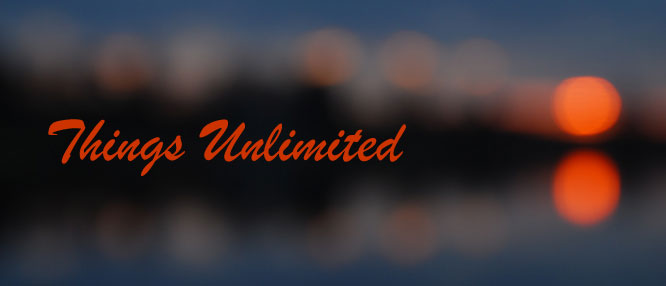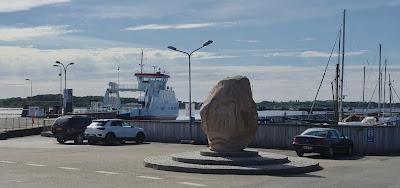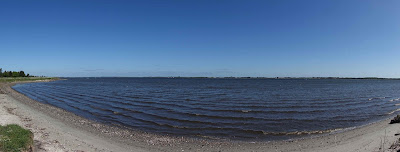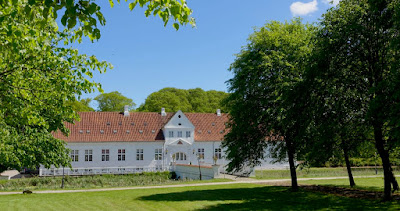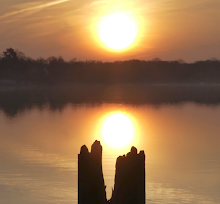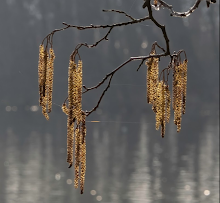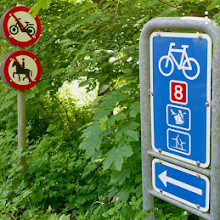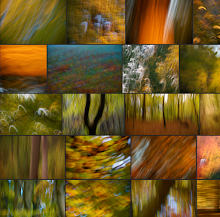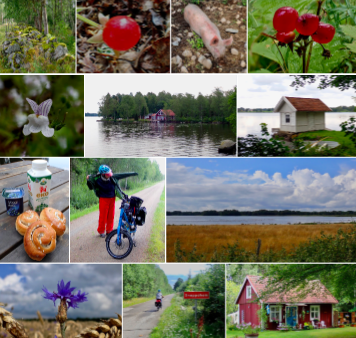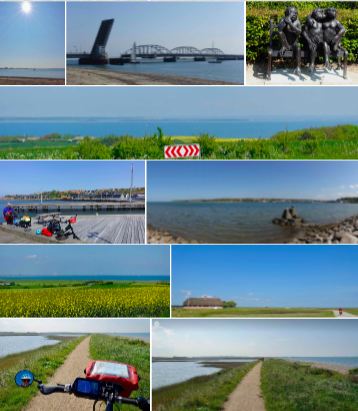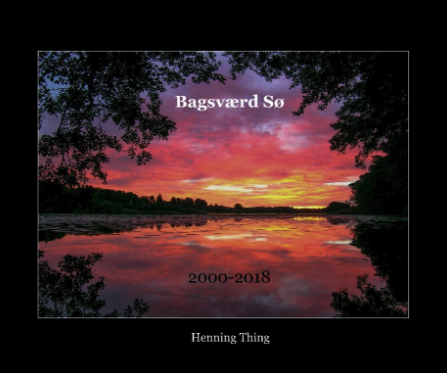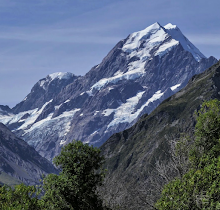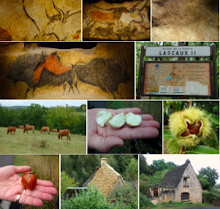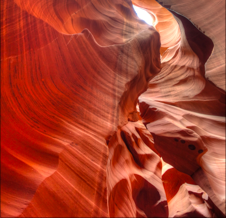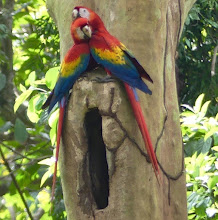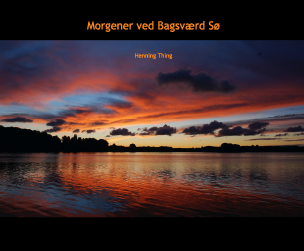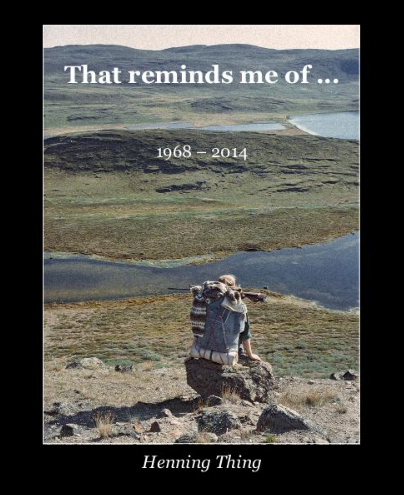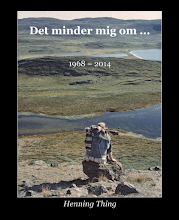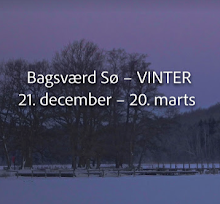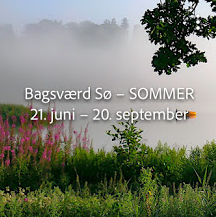Today has been different: It began with sunshine and blue sky, – and it has lasted all day !
We left Fur island via an 8-minutes ride across the strait ...
... and enjoyed the voyage however short.
 |
| Looking back at Fur on a beautiful summer morning. |
The first plan was to take the route along Salling's west coast via the medieval castle Spøttrup, but in order to minimize the effect of the persistent west wind we opted for an alternative plan that took us southwards along the east coast of the peninsula to Skive.
En route we passed this brand new and ultra-modern bacon factory. Inside these huge and windowless buildings are thousands of live pigs on death row. Not a life to be envied and supported. Buy oinking, free-wheeling eco-pigs if you want something porky.
Lunch break happened somewhere on the old Glyngøre and Skive railway line (1884-1979).
The tiny village of Lyby is the remains of the long-gone rail era.
We arrived at sunny Skive and proceeded to the marina where we caught a glimpse of this naked woman in high heels.
Tempted by the summery weather and temps we settled for a coffee-and-ice-cream break at the harbour front's Is à Bella gelato joint.
Next to the harbour is Krabbesholm Højskole with the main building dating back to medieval times.
After a lengthy – and faultily signed – escape route out of Skive, we reached the east shore of Flyndersø and stopped at Sahl to enjoy the beautiful church, famous for its golden altar. I recalled that my parents took me to this church 60 years ago!
Only a couple of kilometers from Sahl is the outdoor museum of Hjerl Hede. However, it was about to close when we arrived. More luck next time. – We then focussed on the fork-knife-bed sign and biked the last three kms to Sevel and checked in at the old Sevel Inn that is squeezed in between the church and the grocery store.
– – –
We have finished a very good meal and are now relaxing upstairs in room #4, just above the bar. Expect a lively Friday night, but hope for a quiet one.
Tomorrow will be our last biking day. So far we have "eaten" 711 kms of sand, gravel and asphalt and with the 49 kms left for the last stage back to our car at Jegindø, we'll have rolled a total of 760 kilometers around Limfjorden.
. . . . .
Thanks for following us.
Stay tuned !
